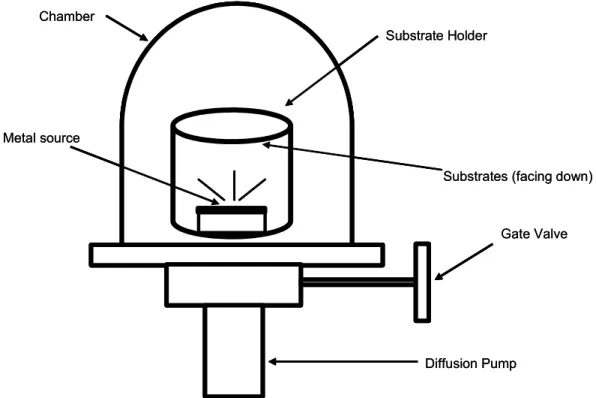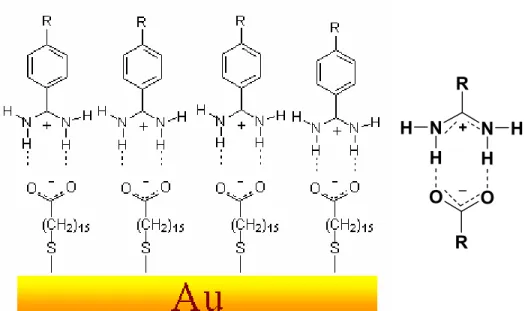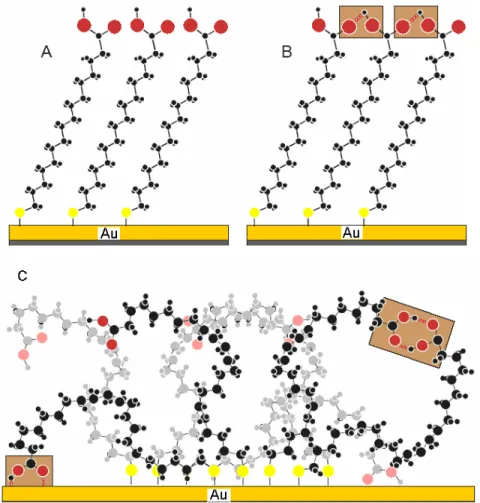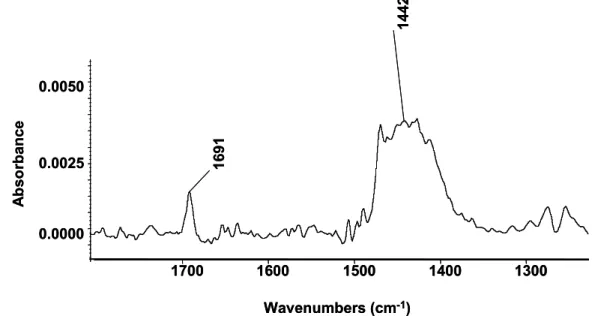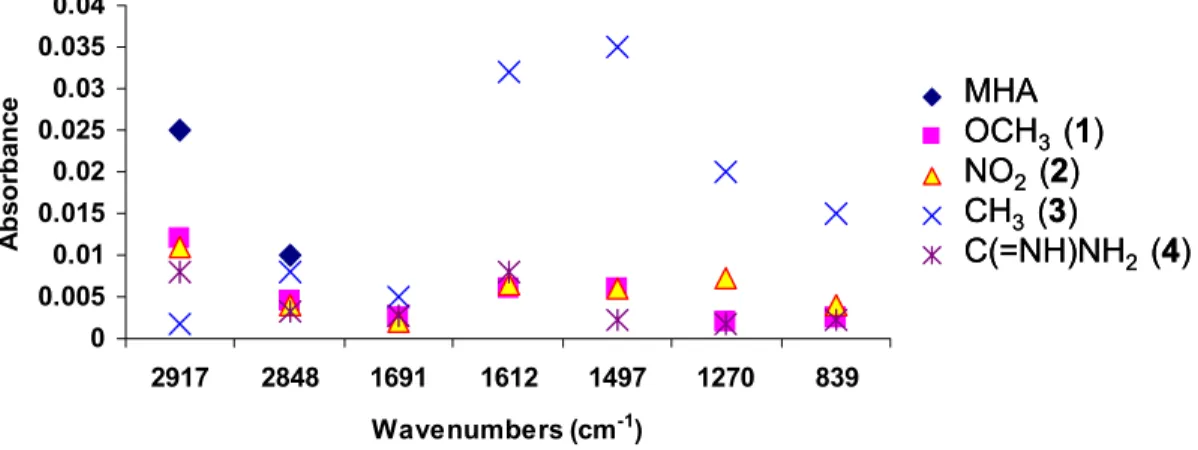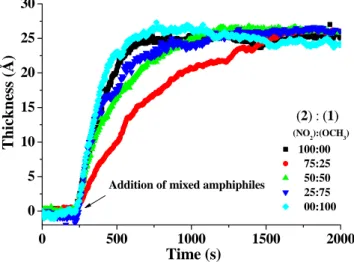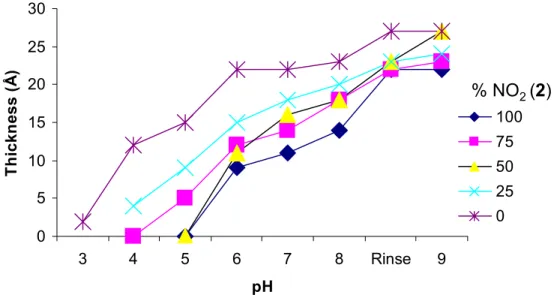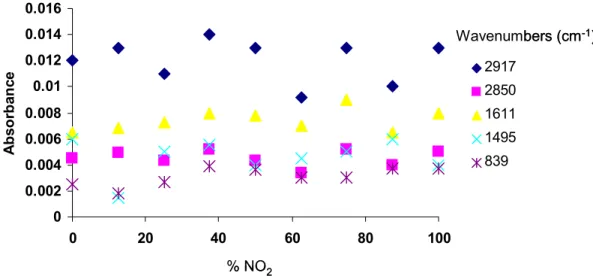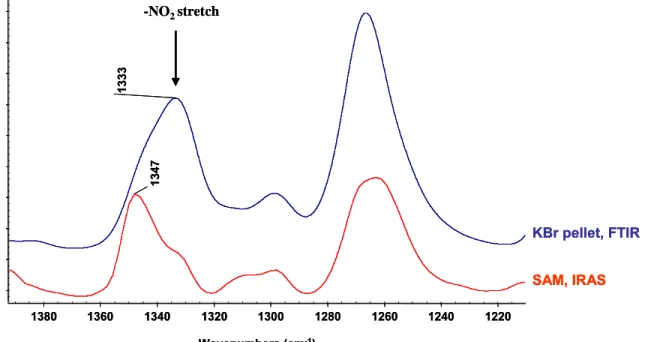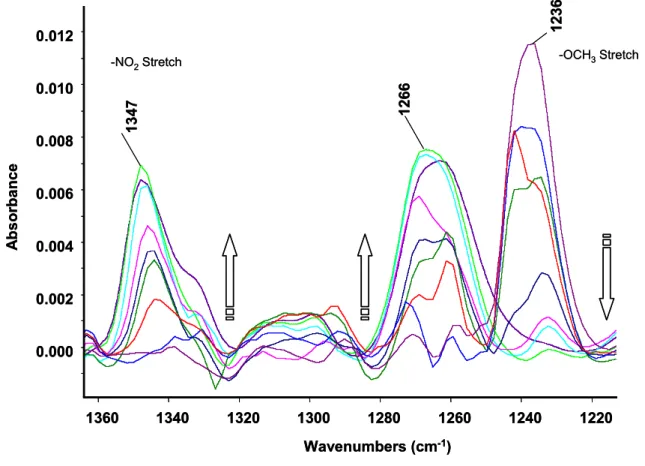SWITCHABLE ASSEMBLY OF STABLE ORDERED MOLECULAR LAYERS:
TOWARDS A REVERSIBLE BIOSENSOR PLATFORM
Dem Fachbereich Chemie der Universität Dortmund zur Erlangung des akademischen Grades eines
Doktor der Naturwissenschaften (Dr. rer. Nat.)
vorgelegte Dissertation
von:
M. Sc. Ravindra R. Deshmukh
Geboren am 11.09.1975 In Jalana, Indien
Betreuer: Priv. Doz. Dr. Börje Sellergren Koreferrent: Univ.-Prof. Dr. Roland Winter
Universität Dortmund, Institut für Umweltforschung
March 2006
I take this opportunity to convey my deepest sense of gratitude to all those who helped me in my thesis work.
First and foremost, I would like to thank my supervisor, PD Dr. Börje Sellergren for giving me the opportunity to work in the field of Self-Assembled Monolayers (SAMs) and for constant support and guidance throughout this work.
I also thank Prof. Dr. Michael Spiteller, Head, INFU, for the nice atmosphere and working environment during this thesis work.
I would like to thank Dr. Andrew J. Hall, Dr. Eric Schillinger, Dr. Marco Emgenbroich and Dr. Francesca Lanza-Sellergren for creative guidance, invaluable help and friendly discussions during the work. Very special thanks to Dr. Jeroen Verhage (specially for the crate of Hövels, which has driven me to finish my thesis in time!!!!) for helpful discussions and constructive suggestions during thesis writing.
My special thanks to Dr. F. Katzenberg for contact angle measurements, Dr. J.
Baranski, and Dr. Ioana Pera for Atomic Force Microscopy measurements and Robert Stonies for gold evaporations.
I would like to thank especially all the members of Sellergren group (present and former) featuring in no particular order as such, Dr. Sandra Pati, Dr. Panagiotis Manesiotis, Dr. Maria-Magdalena Titirici, Dr. Yasumasa Kenekiyo, Carla Aureliano, Filipe Vilela, Cristiana Borrelli, Issam Lazraq, Bettina Hofmann, Kim Schwarzkopf, Anupkumar, for nice working atmosphere and for their wonderful advices and support during my stay in the group.
I would like to thank my teachers Prof. M.N. Deshpande, Dr. R. J. Lahoti, Dr. K.V.
Srinivisan, Dr. U. R. Kalkote and Dr. S.R Bhusare for their helpful guidance during my early stages of the research work.
Last but definitely not the least; I owe my immense gratitude to my parents for their continuous support, blessings and their encouragement throughout my research work.
Financial support from Deutsche Forschungsgemeinschaft (DFG) Project: Se 777/2-
5) is thankfully acknowledged.
Table of contents
1 Zusammenfassung ...7
2 Summary ...10
3 Introduction...13
3.1 Self-assembled monolayers ...13
3.2 Preparation of gold surfaces...18
3.3 Synthesis of self-assembled monolayers of alkanethiols...21
3.4 Terminal groups that produce high energy surfaces...24
3.5 Terminal groups that produce surfaces with intermediate energies...25
3.6 Terminal groups that produce low energy surfaces ...25
3.7 Use of polar surface for covalent and non-covalent attachment ...26
3.8 Alkanethiols containing aromatic structures...27
3.9 Self-assembled monolayer as biosensor platform ...27
3.10 Switchable surfaces...28
3.11 The amidinium-carboxylate ion pair...30
3.12 Self-assembled monolayers of Mercaptohexadecanoic Acid (MHA) ....31
3.13 References ...34
4 Results and Discussion ...39
4.1 Synthesis of hetrofunctionalized amphiphiles ...39
4.2 Adsorption of single component amphiphiles on gold surfaces ...41
4.2.1 In-situ ellipsometry...42
4.2.2 Air eeellipsometry...44
4.2.3 The influence of pH on the layer thickness...45
4.2.4 Infrared reflection absorption spectroscopy (IRAS) ...50
4.2.5 Contact angle measurements...56
4.3 Mixed self-assembled monolayers OCH
3and NO
2amphiphiles...58
4.3.1 In-situ ellipsometry...59
4.3.2 The influence of pH on the mixed self-assembled monolayers ...61
4.3.3 IRAS of mixed SAMs of ...62
4.3.4 Contact angle measurements...71
4.4 Mixed self-assembled monolayers of OCH
3and C(=NH)NH
2...72
4.4.1 In-situ ellipsometry...73
4.4.2 The influence of pH on mixed self-assembled monolayers ...74
4.4.3 IRAS of mixed SAMs of OCH
3and C(=NH)NH
2...76
4.4.4 Contact angle measurements...81
4.5 Atomic force microscopy (AFM)...82
4.5.1 AFM of single component monolayers ...85
4.5.2 AFM of mixed component monolayers ...91
4.5.3 Conclusions...92
4.6 Introducing bioaffinity ligands at ω-position of the amphiphiles ...95
4.6.1 Synthesis of ω-functionalized biotinylated amphiphiles ...96
4.6.2 In situ ellipsometry...97
4.6.3 IRAS of hydroxide and biotin functionalized amphiphiles ...100
4.7 Mixed SAMs of hydroxide and biotin functionalized amphiphiles...103
4.7.1 Air ellipsometry...104
4.7.2 IRAS of mixed SAMs hydroxide and biotin amphiphiles ...107
4.7.3 IRAS study of the adsorption of streptavidin (SA) on mixed SAMs of hydroxide and biotin functionalized amphiphiles...109
4.7.4 Conclusions...115
4.8 Switchable assembly of α,ω-bis(4-amidinophenylamine)alkanes ...116
4.8.1 In situ ellipsometry...117
4.8.2 IRAS of α,ω-bis(4-amidinophenylamine)alkanes...120
4.8.3 Contact angle measurements...122
4.8.4 Conclusions...123
4.9 Introducing amide linkages in the amphiphiles ...124
4.10 References ...126
5 Experimental Part ...130
5.1 Synthesis of α,ω-hetero-functionalized amphiphiles...130
5.1.1 Synthesis of 4-cynophenoxyoctane-8 bromide...130
5.1.2 Synthesis of 4-methylphenoxy (4-cynophenoxy)octane ...131
5.1.3 Synthesis of 4-methylphenoxy(4-amidinophenoxy)octane hydrochloride ...132
5.1.4 Synthesis of 4-nitrophenoxy(4-cynophenoxy)octane...133
5.1.5 Synthesis of 4-nitrophenoxy(4-amidinophenoxy)octane hydrochloride ...134
5.1.6 Synthesis of 4-methoxyphenoxy(4-cynophenoxy)octane ...135
5.1.7 Synthesis of 4-nitrophenoxy(4-amidinophenoxy)octane hydrochloride ...136
5.2 Synthesis of α,ω-bis(4-amidinophenylamine)alkanes...137
5.2.1 Synthesis of 1,9-bis (4-cyanophenylamine) nonane (Nonamidine) 137 5.2.2 Synthesis of 1,9-bis (4-amidinophenylamine) nonane dihydrochloride (Nonamidine) ...138
5.2.3 Synthesis of 1,10-bis (4-cyanophenylamine) decane (decamidine) 139 5.2.4 Synthesis of 1,10-bis (4-amidinophenylamine) decane dihydrochloride (decamidine)...140
5.2.5 Synthesis of 1,12-bis (4-cyanophenylamine) dodecane (dodecamidine) ...141
5.2.6 Synthesis of 1,12-bis (4-amidinophenylamine) dodecane dihydrochloride (dodecamidine)...142
5.2.7 Synthesis of 1,8-bis (4-cyanophenylamide)...143
5.2.8 Synthesis of 1,9-bis (4-cyanophenylamide)...144
5.2.9 Synthesis of 1,8-bis (4-amidinophenylamide) octane dihydrochloride ...145
5.2.10 Synthesis of [Amino-(4-amino-phenyl)-methyl]-carbamic acid tetra- butyl ester ...146 5.2.11 Synthesis of octanedioic acid bis- [(4-carbamimidoyl-phenyl)-amide]
147
5.2.12 Synthesis of nonanedioic acid bis- [(4-carbamimidoyl-phenyl)-
5.3 Synthesis of Biotinylated amphiphile ...150
5.3.1 Synthesis of 2-[4-(8-Bromo-octyloxy)-phenyl]-ethanol...150
5.3.2 Synthesis of 4-{8-[4-(2-Hydroxy-ethyl)-phenoxy]-octyloxy}- benzonitrile ...151
5.3.3 Synthesis of 4-(10-Bromo-decyloxy)-benzonitrile. ...152
5.3.4 Synthesis of 4-{10-[4-(2-Hydroxy-ethyl)-phenoxy]-decyloxy}- benzonitrile. ...153
5.3.5 Synthesis of 4-{10-[4-(2-Hydrody-ethyl)-phenyoxy]-decyloxy}- benzamidine hydrochloride...154
5.3.6 Synthesis of [(4-{10-[4-(2-Hydroxy-ethyl)-phenoxy]-decyloxy}- phenyl)-imino-methyl]-carbamic acid tert-butyl ester. ...155
5.3.7 Synthesis of 5-(2-Oxo-hexahydro-thieno[3,4-d]imidazol-6-yl)- pentanoic acid 2-{4-[10-(4-carbamimidoyl-phenoxy)-decyloxy]-phenyl}-ethyl ester triflouro acetic acid. (Biotinylated amphiphile)...156
6 Characterization of substrates by different methods...158
6.1 Ellipsometry for thin-film and surface analysis...158
6.2 Infrared Reflection Absorption Spectroscopy (IRAS)...160
6.3 Contact angle measurements...162
6.4 Atomic Force Microscopy (AFM) ...163
6.5 References ...165
7 Appendix ...166
7.1 List of abbreviations...166
7.2 Chemicals and Solvents ...167
7.2.1 Chemicals and solvents for synthesis...167
7.2.2 Solvents for NMR spectroscopy ...168
7.3 Infrared Reflection Absorption Spectroscopy...169
7.3.1 Peak intensities of mixed monolayers of -NO
2(2) and -OCH
3(1) amphiphiles at different compositions...169
7.3.2 Peak intensities of mixed monolayers of -NO
2(2) and -OCH
3(1) amphiphiles at different compositions (Repeat)...170
7.3.3 Peak intensities of mixed monolayers of –OCH
3(1) and C(=NH)NH
2(4) amphiphiles at different compositions...171
7.3.4 Peak intensities of mixed monolayers of Biotin and Hydroxide amphiphiles at different compositions...172
7.3.5 Peak intensities of mixed monolayers of Biotin and Hydroxide amphiphiles at different compositions (Repeat)...173
7.3.6 Peak intensities of mixed monolayers of Biotin and Hydroxide amphiphiles after the addition of SA at different compositions ...174
7.3.7 Peak intensities of mixed monolayers of Biotin and Hydroxide amphiphiles after the addition of SA at different compositions (Repeat)....175
7.3.8 Peak intensities of amineamidines ...176
7.4 Ellipsometric ∆ and Ψ values of the assembled amphiphiles on acid terminated SAMs...176
7.4.1 Single component amphiphiles...176
7.4.2 Mixed amphiphiles...177
7.5 Atomic Force Microscopy ...178
7.5.1 AFM of MHA SAMs ...178
7.5.2 AFM of -NO
2amphiphilic SAMs on acid functionalized surface...179
7.5.3 AFM of acid functionalized surface at pH 3 ...180
7.5.4 AFM of –OCH
3SAMs on acid functionalized surface at pH 3 ...181
1 Zusammenfassung
In dieser Doktorarbeit wird das Design, die Synthese und die schrittweise Konstruktion von Self-Assembled Monolayers (selbstorganisierte Monoschichten, SAMs) via nicht-kovalenten Interaktionen auf Goldoberflächen beschrieben.
Diese SAMs sind nützlich zur Konstruktion einer Biosensor Plattform.
Molekülen interagieren mit anderen Molekülen durch schwache Wechselwirkungen (0.1-5 kcal mol
-1), sowie Wasserstoffbrücken, Van-der-Waals- Kräfte, oder Dispersionskräfte. Diese sind zusammen bekannt als 'nicht- kovalente’ Interaktionen. Solche Interaktionen spielen eine wichtige Rolle in fundamentalen biologischen Prozessen, wie z.B. der Faltung von Proteinen oder des Expression von Genen und deren Transskription.
Der Hauptteil dieser Arbeit beschäftigt sich mit der Konstruktion einer reversibelen Version eines Biosensor- Chips durch nicht-kovalente Interaktionen.
Zu Beginn ist demonstriert, wie α,ω -bis(4-amidinophenoxy)alkane reversibele mono-und doppelschichten auf Thiol-SAM’s, welche carboxyl-funktionalisiert wurden, auf Gold bilden. Zur Erweiterung des Repertoires frei liegenden Gruppen auf den amphiphylen SAMs, haben wir eine Serie von ω - funktionalisierten α -(4-amidinophenoxy)alkan Amphiphylen hergestellt.
Anschlieβend haben wir die Formation von Monoschichten auf Mercaptohexadecansäure (MHA) funktionalisierten SAMs auf Goldoberflächen beobachtet.
Die Kopfgruppeinteraktionen zwischen der negativ geladenen Carboxylat- Oberfläche (Protonen Akzeptor) und den positiv geladenen Amidinium- Amphiphylen (Protonen Donor) bilden bei alkalischem pH Wert (pH 9) ein gezieltes, zyklisches und stabiles Netzwerk von Wasserstoffbrücken.
Da diese Selbstorganisationen durch den pH bestimmt werden, wollten wir die
Originaloberfläche mit Säuregruppen durch Änderung des pH-Wertes zurück
bekommen. Hierbei haben wir beobachtet, dass bei einer Senkung des pHs von
pH 9 zu pH 3 die amphiphyle Schicht komplett von der Carboxylat-Oberfläche
abgerissen wird. Die Reversibilität der Sensorplatform ist also erreicht.
Desweiteren haben wir beobachtet dass die Schichtdicke bei Senkung des pH- Werts abnimmt. Dies entspricht dem Grad der Ionisierung der Carboxylgruppen auf der Goldoberfläche.
Die Regeneration der Oberfläche kann also durch Änderung des pH-Werts erreicht werden. Eine verschmutzte Oberfläche kann einfach durch Senkung des pH Werts weggewaschen werden und neu gebildet werden.
Die direkte Formation der Amphiphyl Schicht auf der Oberfläche und die Deformation dieser Schicht wurde mit in situ-Ellipsometry beobachtet. Es gibt Übereinstimmung zwischen der beobachteten Schichtdicke und der maximalen Schichtdicke. Dies deutet auf eine dicht-gepackte Monoschicht auf der COOH- Oberfläche hin. Um mehr Informationen über die Schichtdicke zu bekommen wurden Luft-Ellipsometrie- und Rasterkraft-Mikroskopie- (AFM) Experimente durchgeführt. Die Resultate waren in Übereinstimmung mit den in situ- Ellipsometrie-Experimenten.
Reflexions-Absorptions-Infrarot-Spektroskopie (RAIR) Experimente von Ein- Komponenten- und Zwei-Komponenten- Amphiphylschichten zeigten die charakteristischen Peaks aller funktionellen Gruppen in den selbst-organisierten Monoschichten. Das RAIR Experiment war in Übereinstimmung mit dem Transmissionsspektrum, was auf die Anwesenheit der amphiphylen Schicht auf dem COOH SAM deutet.
Die asymmetrische CH
2-Streckungsspitze bei 2917 cm
-1, die in nahezu allen amphiphylen Schichten beobachtet wurde, deutet auf die Anwesenheit einer kristallinen und geordneten amphiphylen Schicht.
Kontaktwinkel-Experimente zeigten, dass hydrophobe Oberflächen geformt werden. Die zuerst hydrophile Oberfläche (KW = 10
o± 5
o) wird umgewandelt in eine weniger hydrophobe Oberfläche durch Selbst-Assemblierung des ω - funktionalisierten α -4-amidinophenoxy)alkan-Amphiphyls in acht Schritten.
Der wichtigste Teil dieser Dissertation beschreibt die Konstruktion der
"schaltbaren Assemblierung stabiler und geordneter molekularer Schichten, hin
zu reversibelen Biosensor-Plattformen“.
Das ω -Biotin funktionalisierte Amphiphyl war auf der Schicht mit Carboxylsäure Kopfgruppen selbstorganisiert. Anschlieβend wurde Streptavidin (SA) auf der Biotin-Oberfläche immobilisiert um die Biosensor-Aktivität zu bestimmen. Eine sehr geringe Konzentration von Streptavidin (500 nM) konnte mit Luft- Ellipsometrie und RAIR Spektroskopie noch nachgewiesen werden. Basierend auf RAIR Spektren vor und nach Protein-Adsorption und Waschen mit Boratpuffer (pH 9) wird gezeigt, dass die ω-Biotin funktionalisierten Amphiphyl- Schichten beim Streptavidin Austausch stabil sind. Sowohl eine kristalline Struktur wurde in der Schicht wahrgenommen, als auch die Anwesenheit der Amid I -und Amid II- Banden des Streptavidins.
Zur Erhaltung einer maximalen Anzahl von Biotingruppen auf der Oberfläche und zur Minimierung nicht-spezifischer Adsorption des Streptavidins, wurde das ω- Biotin funktionalisierte Amphiphyl verdünnt mit ω -hydroxyl funktionalisierten SAMs.
Eine maximale Bindung von Streptavidin (47 Å ± 4 Å) wurde bei einem Gehalt von 25% Biotin erhalten. Bei einem steigenden Gehalt von Biotin wurde eine Abnahme der Schichtdicke des Streptavidin beobachtet.
Die beobachtete Schichtdicke der Proteinmoleküle auf einem Hydroxyl- terminierten SAM, einebloβen Goldschicht und einem MHA terminierten SAM zeigt, dass die nicht-spezifische Bindung von Streptavidin unerheblich war.
Eine Senkung des pH-Wertes auf der Oberfläche ergibt das Säure
funktionalisierte SAM auf der Goldoberfläche, welches erneut benutzt werden
kann für neue Experimente.
2 Summary
In this thesis are described the design, synthesis and stepwise construction of reversible versions of self-assembled monolayers (SAMs) on gold surfaces via non-covalent interactions and subsequent use of this system for the construction of biosensor platforms.
Molecules can interact with other molecules through weak interactions (0.1 - 5 kcal mol
-1), such as hydrogen bonding, van der Waals, or dispersive forces, which are collectively known as non-covalent interactions. Such interactions play a key role in fundamental biological processes, such as protein folding or the expression and transfer of genetic information.
Throughout this work, the main efforts were focused towards the construction of a reversible version of biosensor chips via non-covalent interactions. Previously we have demonstrated that α,ω-bis(4-amidinophenoxy)alkanes reversibly form mono and bi-layers on carboxylic acid functionalized thiol SAMs on gold. In order to extend the repertoire of exposed head groups in the amphiphilic SAMs, we have synthesized a series of ω-functionalized α-(4-amidinophenoxy)alkane amphiphiles and studied their monolayer formation on mercaptohexadecanoic acid (MHA) functionalized SAMs on gold surfaces.
The head group interactions between the negatively charged carboxylate surfaces (COO
-, proton acceptor) and positively charged amidinium amphiphiles (proton donor) leading to the cyclic, directed, and stable hydrogen-bonded network was driven by a basic (pH 9) borate buffer.
As these assemblies were pH driven, we thought to reconstruct the original acid
functionalized sensor platform by changing the pH. Hence, by lowering the pH of
the surrounding medium of the system form the original pH 9 to pH 3, the
amphiphilic layer was completely removed from the acid surface and a reversible
version of a sensor platform was achieved. We have also observed that the layer
thickness decreases with decreasing pH in a manner reflecting the degree of
ionization of the carboxylic acid groups on the gold surfaces.
The pH switching ability of these formed amphiphiles leads to the regeneration of a single sensor surface upon fouling.
The live formation and disassembly of the amphiphilic assembly on the acid terminated SAMs was studied using in situ ellipsometry. The agreement between the observed layer thicknesses upon addition of the corresponding amphiphiles and the maximum length (estimated length) of the molecules suggests that the amphiphiles form closely packed monolayers on the carboxylate surfaces. To obtain more information on the layer thickness, air ellipsometry and atomic force microscopy were performed and the results were corroborated with those obtained from in situ ellipsometry.
Infrared Reflection Absorption Spectroscopy (IRAS) study of single component and mixed component amphiphilic layers showed that the characteristic peaks for all functionalities in the SAMs were comparative to their transmission spectrum (KBr pellets) indicating the presence of the amphiphilic layers on the acid terminated SAMs. In almost all spectra, the CH
2asymmetric stretch at ~ 2917 cm
-1of the assembled SAMs on the acid surfaces shows the presence of a crystalline and ordered amphiphilic layer. The wetting properties of the surfaces were characterized by contact angle (CA) measurements. The less hydrophobic surfaces was obtained by converting original ω-functionalized acid surfaces (CA
~10°, ±5°) into ω-functionalized α-(4-amidinophenoxy)alkane amphiphile surfaces (CA ~70-75°, ±5°) by self-assembly.
The most important part of this thesis describes the stepwise construction of the
“switchable assembly of stable, ordered molecular layers: Towards a reversible biosensor platform”. To achieve this, we have synthesized an ω-functionalized biotinylated amphiphile in a total of eight steps.
The ω-biotin functionalized amphiphile was subjected to monolayer formation on
acid terminated SAMs. Onto these self-assembled layers, streptavidin (SA) was
immobilized to detect the biosensor activity. A very low concentration of SA (500
nM) was detected using air ellipsometry and IRAS. Based on the IRAS spectra
recorded after protein adsorption and rinsing of the surfaces with borate buffer
pH 9, the ω-biotin functionalized amphiphilic layer appeared stable with respect to protein (SA) exchange.
Furthermore, the crystalline-like nature of the layer and the presence of amide I and amide II bands of the added protein in SAMs were detected.
To maximize surface density of the biotin-terminated amphiphile for the selective recognition of protein SA, and to minimize the non-specific adsorption of the protein, the ω- biotin functionalized amphiphile was diluted with ω-hydroxy terminated SAMs.
We also observed a maximum binding of streptavidin (47 ±4 Å) at a biotin content of 25%, with a gradual decrease in the thickness of the adsorbed SA film as the composition of biotin was increased.
The obtained layer thicknesses of the protein SA molecule on hydroxy terminated SAMs, on bare gold and on MHA terminated SAMs showed that non- specific binding of SA was negligible.
The acidification of the above surfaces yields the acid functionalized (MHA)
SAMs on the gold surface, which in return can be reused for subsequent
measurements.
3 Introduction
3.1 Self-assembled monolayers
One of the most exciting aspects of thin organic films is the interdisciplinary nature of the area, forming bridges between the fields of physics, chemistry and biology. The most common methods for forming supported organic films are the Langmuir-Blodgett and self-assembly techniques, with their primary difference being that they produce physisorbed and chemisorbed monolayars, respectively.
Self-assembly is a tremendously useful technique that is found in almost every area of molecular science. Examples of natural systems that self-assemble include single stranded DNA that self-assembles into duplexes, phospholipids that self-assemble into lipid bilayers and long chains of amino acids that self- assemble into proteins with a defined three-dimensional shape.
Molecules can interact with other molecules through weak interactions (0.1 - 5 kcal mol
-1), such as hydrogen bonding, van der Waals, or dispersive forces, which are collectively known as non-covalent interactions. Such interactions play a key role in fundamental biological processes, such as protein folding or the expression and transfer of genetic information. Especially, H-bonds have an enormous impact on our daily life.
Self-assembled monolayers (SAMs) are molecular assemblies that are formed
spontaneously by the immersion of an appropriate substrate into a solution of an
active surfactant in an organic solvent
[1, 2]. There are several types of SA
methods that yield organic monolayers. These include the addition of
organosilanes to hydroxylated surfaces (SiO
2on Si, Al
2O
3on Al, glass, etc.)
[3- 14],
alkanethiols to gold
[15-23], silver
[24]and copper
[25-27], dialkyl sulfides to gold
[28],
dialkyl disulfides to gold
[29], alcohols and amines to platinum
[28], and carboxylic
acids to aluminum oxide
[30-32]and silver
[33].
From an energetic viewpoint, a self-assembling surfactant molecule can be divided into three parts (Figure 3.1). The first part is the head group, which provides the most exothermic process, i.e., chemisorption on the substrate surface. The very strong molecular-substrate interactions result in an apparent pinning of the head group to a specific site on the surface through a chemical bond. This can be a covalent Si-O bond in the case of alkyltrichlorosilanes on hydroxylated surfaces; a covalent, slightly polar, Au-S bond in the case of alkanethiols on gold; or an ionic -CO
2-Ag
+bond in the case of carboxylic acids on AgO/Ag. As a result of the exothermic head group-substrate interactions, molecules try to occupy every available binding site on the surface and, in this process; they push away molecules that have already adsorbed leading to the formation of crystalline molecular assemblies.
Surface
Chemisorption at the surface
Alkyl or derivatized alkyl group
Surface group
Surface active headgroup Interchain van der Waals and electrostatic interactions
Figure 3.1: A Schematic view of the forces in a self-assembled monolayer.
The second molecular part is the alkyl chain, the first and most important process in the formation of SAMs is chemisorption. Only after molecules are put in place on the surface can formation of an ordered and closely packed assembly begin.
Van der Waals interactions are the main forces in the case of the simple alkyl
chains. On the other hand, when a polar bulky group is substituted into the alkyl
chain, there are also long-range electrostatic interactions that, in some cases, are energetically more important than the Van der Waals attractions.
The third part is the terminal functionality, which, in the case of a simple alkyl chain, is a methyl (CH
3) group. These surface groups are thermally disorderd at room temperature, as is apparent from helium diffraction
[25]and FTIR studies
[34]in the case of methyl terminated monolayers, and from surface reorganization studies in the case of hydroxyl terminated monolayers
[35].
The term order is used to describe molecular assemblies with translational symmetry, i.e., a two-dimensional crystalline-like monolayer. The term “close packing” is usually associated with the density of crystalline poly(ethylene).
In the field of self-assembly, the structure and bonding of organic molecules adsorbed to metal surfaces may be investigated using different surface sensitive techniques such as Infrared Reflection Absorption Spectroscopy (IRAS), Contact angle measurements, atomic force microscopy (AFM), ellipsometry, surface plasmon resonance (SPR), Neutron reflectativity, and cyclic voltametry (CV) are the few techniques which surface chemist uses in laboratory to analyze the surfaces.
SAMs of functionalized alkanethiols on gold surfaces hold great promise for
applications in several different areas. Some examples of suggested and
implemented applications are molecular recognition, SAMs as model substrates
and biomembrane mimetics in studies of biomolecules at surfaces, selective
binding of enzymes to surfaces, chemical force microscopy, metallization of
organic materials, corrosion protection, molecular crystal growth, alignment of
liquid crystals, pH-sensing devices, patterned surfaces on the µm scale,
electrically conducting molecular wires and photoresists.
References
[1] Bigelow, W. C., Pickett, D. L., Zisman, W. A., J. Colloid Interface Sci. 1946, 1, 513.
[2] Zisman, W. A., Adv. Chem. Ser. 1964, 43, 1 . [3] Sagiv, J., J. Am. Chem. Soc. 1980, 102, 92.
[4] Maoz, R., Sagiv J., J. Colloid Interface Sci. 1984, 100, 465
[5] Gun, J., Iscovici, R., Sagiv J., J. Colloid Interface Sci. 1984, 101, 201 [6] Gun, J., Sagiv, J., J. Colloid Interface Sci. 1986, 112, 457.
[7] Finklea, H. O., Robinson, L. R., Blackburn, A., Richter, B., Allara, D., Bright, T., Langmuir 1986, 2, 239.
[8] Cohen, S R., Naaman, R., Sagiv, J., J. Phys. Chem. 1986, 90, 3054.
[9] Maoz, R., Sagiv, J., Thin Solid Films 1985, 132, 135.
[10] Maoz, R., Sagiv, J., Langmuir 1987, 3, 1045.
[11] Netzer, L., Iscovici, R., Sagiv, J., Thin Solid Films 1983, 99, 235.
[12] Netzer, L., Sagiv., J. J. Am. Chem. Soc. 1983, 105, 674.
[13] Tillman, N., Ulman, A., Schildkraut, J. S., Penner, T. L., J. Am. Chem. Soc.
1988, 111, 6136.
[14] Tillman, N., Ulman, A., Penner, T. L., Langmuir 1989, 5, 101.
[15] Bain, C. D., Troughton, E. B., Tao, Y., Evall, J., Whitesides, G. M., Nuzzo, R.
G., J. Am. Chem. Soc. 1989, 111, 321.
[16] Porter, M. D., Bright, T. B., Allara, D. L,, Chidsey, C. E. D., J. Am. Chem.
Soc. 1987, 109, 3559.
[17] Nuzzo, R. G., Dubois, L. H., Allara, D. L., J. Am. Chem. Soc. 1990, 112, 558.
[18] Rubinstein, I., Steinberg, S., Tor, Y., Shanzer, A., Sagiv, J., Nature 1988, 332, 426.
[19] Whitesides, G. M., Laibinis, P. E., Langmuir 1990, 6, 87.
[20] Chidsey, C. E. D., Loiacono, D. N., Langmuir 1990, 6, 709.
[21] Chidsey, C. E. D., Liu, G. Y., Rowntree, P., Scoles, G., J. Chem. Phys. 1989, 91, 4421.
[22] Bain, C. D., Whitesides, G. M., J. Am. Chem. Soc. 1989, 111, 7164.
[24] Ulman, A., J. Mat. Ed. 1989, 11, 205.
[25] Stewart. K. R., Whitesides, G. M., Godfried, H. P., Silvera, I. F., Surf. Sci.
1986, 57, 1381.
[26] Blackman, L. C. F., Dewar, M. J. S., J. Che,. Soc. 1957, 171.
[27] Blackman, L. C. F., Dewar, M. J. S., Hampson, H., J. Appl. Chem. 1957, 7, 160.
[28] Troughton, E. B., Bain, C. D., Whitesides, G. M., Nuzzo, R. G., Allara, D. L., Porter, M. D., Langmuir 1988, 4, 365.
[29] Nuzzo, R. G., Fusco, F. A., Allara, D. L., J. Am. Chem. Soc. 1987, 109, 2358.
[30] Allara, D. L., Nuzzo, R. G., Langmuir 1985, 1, 45.
[31] Allara, D. L., Nuzzo, R. G., Langmuir 1985, 1, 52.
[32] Ogawa, H., Chihera, T., Taya, K., J. Am. Chem. Soc. 1985, 107, 1365.
[33] Schlotter, N. E., Porter, M. D., Bright, T. B., Allara, D. L., Chem. Phys. Lett.
1986, 132, 93.
[34] Nuzzo, R. G., Kprenic, E. M., Dubois, L. H., J. Chem. Phys. 1990, 93, 767.
[35] Evans, S. D., Ulman, A., Sharma, R., Langmuir 1991, 7, 15.
3.2 Preparation of gold surfaces
From an experimental point of view, gold is among the easiest of materials to use as a substrate. Unlike many other metals, gold does not readily oxidize or contaminate upon exposure to the atmosphere. Gold films can be handled with a minimal amount of precautions and do not require specialized facilities, such as clean rooms. For example, gold films that have been exposed to the variety of airborne contaminants found in a typical organic chemistry laboratory can reused. High quality SAMs can be routinely obtained, as thiols and disulfides displace these weakly adsorbed materials during the assembly of the SAM.
The most commonly employed method for generating gold surfaces is the
evaporation of gold onto a relatively flat substrate to produce a thin film (~ 1000
to 2000 Å). Such preparations are conducted within a vacuum chamber that is
capable of achieving a pressure less than 10
-6torr. The passage of an electrical
current through a metal target is used to heat the gold to a temperature where
the source material evaporates and deposits onto the substrates (the evaporation
rate in our case was 0.3 nm/s). Generally this procedure is accomplished either
by applying a voltage across a tungsten filament that supports the source
material or by applying an electron beam directly to the material. The evaporation
system shown in Figure 3.2 is a common apparatus in materials science, physics
and electrical engineering departments, and gold is one of the easier materials to
evaporate in such systems. Particular advantages of this procedure are that one
can generate gold surfaces of relatively large areas (> 100 cm
2) inexpensively
and that the resulting gold films are extremely pure. We have used glass
substrates because they are relatively flat. As the level of adhesion between the
deposited gold film and the glass support is relatively weak; a 20 nm layer of
chromium was used to enhance the adhesion. A requirement for adhesion by
these materials is that the vacuum is maintained between evaporation of the
adhesion layer and the gold; this procedure requires that the evaporation
chamber contains two individually addressable evaporation sources.
Chamber
Substrate Holder
Gate Valve
Diffusion Pump Metal source
Substrates (facing down) Chamber
Substrate Holder
Gate Valve
Diffusion Pump Metal source
Substrates (facing down)
Figure 3.2: Schematic illustration of a typical evaporation system used for the preparation of gold substrates.
Nuzzo et al.
[1]showed that gold layers prepared by evaporation at room
temperature are polycrystalline and have a predominately (111) texture. An
increasingly popular substrate in these studies is an epitaxial gold layer
supported on mica.
[2]. Mica has a layered structure and the act of simply peeling
apart the mica sheets can reveal large surface areas that are atomically flat. The
crystallinity and morphology of the gold films that form on mica are dependent on
the temperature of the mica during the deposition
[3]. For example, gold
evaporated onto mica held at room temperature contains Au(111) crystallites that
are ~ 50 nm in diameter; this structure is essentially identical to that which forms
when gold is evaporated at room temperature onto glass substrates.
Figure 3.3: Topographic image of a gold surface obtained using atomic force
microscopy. The gold surface was prepared by the sequential evaporation of 20
Å of chromium and 1000 Å of gold onto a freshly cleaved mica surface at room
temperature.
3.3 Synthesis of self-assembled monolayers of alkanethiols
Sulfur and selenium compounds have a strong affinity to transition metal surfaces. This is probably because of the possibility to form multiple bonds with surface metal clusters. The number of reported surface active organosulfur compounds that form monolayers on gold has increased in recent years. The most studied, and probably most understood SAM is that of alkanethiolates on Au(111) surfaces.
For the study of surface properties, SAMs must fulfil the following requirements:
1) to be strongly attached to the substrate and, therefore, chemically and thermally stable, (2) to be homogeneous and closely packed, and (3) to allow a diverse range of surface functional groups to be present. Alkanethiols readily give homogeneous, ordered, and chemically and mechanically stable SAMs and hence provide an excellent model system for study.
During the last two decades, much progress has been made in the preparation of
self-assembled monolayers on different substrates. The greatest operational
challenge that the materials’ chemist faces in this research area is often in
accessing the molecular precursors needed for preparing the chemically diverse
surfaces available by the assembly of thiols onto gold. The commercially
available thiols are primarily limited to unsubstituted short-chained alkanethiols
(CH
3(CH
2)
nSH; n=0 to 8) and unsubstituted long-chained alkanethiols
(CH
3(CH
2)
2n-1SH; n=5 to 9) that produce low-energy methyl surfaces. Short-
chained alkanethiols (HS(CH
2)
nX; n=1,2 for X=COOH, CO
2CH
3, CO
2CH
2CH
3and
n=2 for X=NH
2and OH) and related disulfides, which may not form highly
organized structures due to limited interchain packing, various aromatic thiols
that achieve limited intermolecular packing on the surfaces and α,ω-
alkanedithiols (HS(CH
2)
nSH; n=2 to 9) that form disorganized films comprising
structures with one or both thiols adsorbed to the gold surface. Biological
species, such as lipoic acid, cysteine, and dithiothreitol provide commercially
available materials for derivatizing the gold surface with thiols that contain polar
functionalities.
Porter et al.
[4]reported that, the formation of densely packed, crystalline hydrocarbon monolayers requires the use of alkanethiols with typically greater than twelve methylene units and a tail group that is smaller than the cross- sectional area of the polymethylene chain. Bulky tail groups, although increasingly popular for synthetic reasons, would not be expected to form the highly organized, densely packed assemblies associated with the assembly of longer-chained alkanethiols. Their primary role is to provide a point of attachment to the gold surface via chemisorption processes and their level of organization depends greatly on the nature and packing abilities of the species extending away from the surface.
In the literature, the types of organosulfur compounds that have been adsorbed onto gold exhibit a broad diversity. For many of these compounds, they can be grouped into categories based on their skeleton (alkyl or aromatic groups), types of substitution (small, bulky, electroactive, etc.), and associated properties (crystalline packing, polymerizable, reactive, etc.). The following section provides an overview of the chemical structures that have been assembled onto gold along with a discussion of their properties and utility.
Because of their high level of packing, n-Alkanethiols containing small terminal groups enable the formation of densely packed, often crystalline, self-assembled monolayers on gold. Such films are useful in studying barrier properties
[5]friction
[6]
, adsorption
[7, 8], multilayer formation
[9-14], and wetting phenomena
[15-18].
Examples of the terminal moieties in this category include CH
3, OH, COOH,
CONH
2, and CO
2CH
3, where the cross-sectional diameter of the tail group is
smaller than that for the polymethylene chain (~ 20 Å)
[19]and its size should not
interfere with the packing of the hydrocarbon chains. With these tail groups, the
monolayer expresses a two-dimensional sheet of homogeneous organic
functionality at its exposed surface. These surfaces provide useful models for
fundamental studies of organic systems such as polymers, as a detailed
understanding of their surface chemistry is complicated by their heterogeneity,
both in terms of composition and structure.
In our previous reports for the formation of well ordered acid functionalized SAMs, we have observed that not all alkanethiols assemble onto gold and form highly organized assemblies
[20]. In addition to the requirement that the tail group size not interfere with the packing of the hydrocarbon chains, the length of the hydrocarbon chain also plays a role in structuring the assembly
[20]. Using complementary techniques, Porter et al. determined that shorter-chained assemblies (HS(CH
2)
nCH
3; n ≤ 11) are more disordered than longer chained alkanethiolate monolayers (n ≥ 15)
[4]. The longer-chained thiols form a fully extended, trans zigzag structure on gold with the hydrocarbons tilted at an angle of ~ 30° from the surface normal which is shown in the Figure 3.4
Figure 3.4: Self-assembled monolayers of octadecanethiol on gold surface.
For the shorter-chained thiols, the level of interchain attraction is lower and
diminishes the degree of order for these assemblies. These systems are still
highly organized but contain a greater density of gauche conformers than those
prepared from longer-chained adsorbates.
The ability to tailor the exposed surface of the monolayer by selection of the tail group on the alkanethiol provides great advantages in the studies of various interfacial properties such as wetting, friction, adhesion, and adsorption. For example, monolayers formed from HS(CH
2)
15X generate a surface with high (X=
COOH), intermediate (X= OCH
3), or low (X= CH
3) energy surface, with free energies that depend on the chemical constituency of the terminal group
[18, 21]. In this straightforward manner, surfaces with varying surface energies may be produced by appropriate choice of terminal group. The alkyl-based monolayers are extremely convenient systems for producing such structures because a diverse collection of tail groups can be incorporated synthetically into the alkyl framework with relative ease. The following section explores the diversity of tail groups that have been expressed at the surface of monolayers supported on gold and focuses on the relationship between molecular structure and surface free energy, as determined from wetting measurements.
3.4 Terminal groups that produce high energy surfaces
The thiols-on-gold methodology is perhaps the most versatile system of self- assembled monolayers, as it offers the ability to form high-energy surfaces with relative simplicity. The only constraints are that the tail groups do not interact strongly with the gold substrate or react with thiols
[18]. The assembly of alkanethiols can lead to surfaces that expose OH, COOH, CONH
2, B(OH)
2, and PO
3H
2groups which are all wetted by water. The wetting properties for above surfaces formed by the assembly of thiols onto gold were reported previously and they are summarized in Table 3.1 [θ (H
2O) < 15°].
Polar terminal groups can provide reactive sites for further derivatization of a
monolayer surface. The formation of multilayer structures on surfaces terminating
in carboxylic acids
[9, 12], phosphonic acids
[10, 11], and alcohols
[13, 23-24]have been
well described. In addition, OH, COOH, and NH
2surfaces can provide anchoring
sites for the covalent immobilization of various molecules.
3.5 Terminal groups that produce surfaces with intermediate energies
Alkanethiols terminating with halogens
[18], nitriles
[5], and ether groups
[18, 16]produce SAMs with intermediate surface energies. Despite the polarities associated with these functionalities, these surfaces are much less hydrophilic than those that contain hydrogen bond-donating fuctional groups (OH, COOH, and CONH
2). Methyl capped polar functionalities such as methyl esters, acetates and amides, exhibit similar wettabilities to SAMs exposing nitriles or halides.
3.6 Terminal groups that produce low energy surfaces
As for other self-assembling systems, alkyl thiols and disulfides that terminate in nonpolar groups, adsorb onto gold and produce low-energy surfaces that have hydrophobic and oleophobic characteristics
[4, 18, 25]. SAMs prepared from alkanethiols that expose methyl group at their surface shows the highly hydrophobic surfaces. As a result of their dense packing, robust behavior, and hydrophobic nature, these SAMs provide useful model substrates for determining the oriented structure of surfactants at the interface between water and hydrophobic surfaces
[27].
Surface energy Surface Head
Group θ (H
2O)
Advancing
Reference
-COOH < 15 17, 18, 21
-CONH
2< 15 21
High-Energy
Surfaces -OH < 15 21, 17
-Br 83 17
-S
2(CH
2)
11NH
2)
251 79 -S
2(CH
2)
12NH
2)
259 79
-CN 60 17, 5
-COOCH
367 18, 21
Intermediate- Energy Surfaces
-OCH
374 16, 18
-CH
3115 17
Low-Energy
Surfaces -O(CH
2)
2CH
3105 16
Table 3.1: Wetting properties of SAMs on gold formed from alkanethiols.
3.7 Use of polar surface for covalent and non-covalent attachment
Terminally substituted alkanethiol SAMs with polar tail groups have provided reaction centers for the attachment of various species to gold. Alkanethiols terminating in COOH and OH groups are among the most synthesized organosulfur compounds
[18, 21, 28]and they produce SAMs amenable to further chemical modification. Recently, Wöll et al.
[29]demonstrated that COOH functionalized SAMs could be transformed into their carboxylate anion (COO
-) by using 0.0 2 M HS(CH
2)
15X where X= COOH, in pure ethanol. The generation of negatively charged carboxylate (COO
-) surfaces was achieved due to the presence of a small amount of NaOH present in the ethanol. They also stated that although NaOH is not soluble in pure ethanol, ethanol regularly contains small amount of water which is sufficient to solve the small amount of NaOH.
We have already demonstrated that carboxylate anion terminated SAMs could be used for the successful non-covalent immobilization of α,ω-(4- amidinophenoxy)alkanes
[20, 32]and subsequent adsorption of molecules like phosphate biomolecules
[30]and oligonucleotides on them
[31]. The COOH terminated SAMs have also been utilized for covalently immobilizing biomolecules such as cytochrome C
[33], proteins
[34], and antibodies
[35]on gold surfaces.
SAMs of OH-terminated alkanethiols have also been used in surface modification
reactions. Tillman and Ulman chemisorbed octadecyltrichlorosilane
(CH
3(CH
2)
17SiCl
3) onto SAMs of HS(CH
2)
11OH on gold where the thiols provided
a hydroxylated surface for attachment
[24]. Hydroxylated surfaces readily react
with trifluoroacetic anhydride to form the corresponding trifluoroacetate, with
phosphorus oxychloride (POCl
3) to form a phosphate surface and with
chlorosulfonic acid (ClSO
2OH) to form a sulfate surface. Lofas and Johnsson
have reacted alcohol-terminated SAMs on gold with epichlorohydrin; which gives
an ethylene oxide surface that allowing attachment of a dextran matrix to the gold
film as part of a biosensor system
[52].
The use of photochemistry for selective surface modification of SAMs has been demonstrated, e.g. aryl azide
[36, 37]and benzophenone derivatives
[35]have been used in the formation of photo patterned surfaces. Photochemical modification of SAMs has also been achieved using stilbene derivatives where isomerization between the trans- and cis- forms produced controllable differences in wettability
[38]
.
SAMs have also been served as nucleation sites for the formation of electro active polymers by presenting attached monomer units at their surfaces.
Recently, SAMs derived from pyrrole-containing alkanethiols were used to form two-dimensional polymers on gold by direct electrochemical polymerization of the SAM and to grow thicker poly(pyrrole) films on gold by electro polymerization of the SAM with pyrrole
[39, 40].
3.8 Alkanethiols containing aromatic structures
The structural diversity of substituted n-alkanethiolate SAMs on gold extends beyond the simple, purely polymethylene-based systems. These other compounds have been useful for studying such phenomena as wetting
[53, 54], electron transfer
[55], protein adsorption
[56], molecular recognition
[57], and sensing
[58]
. Most either contain a polymethylene chain that links the thiol group with a complex tail group or they include an aromatic group that is located within the usual n-alkanethiol framework.
3.9 Self-assembled monolayer as biosensor platform
Biosensors are increasingly being employed within biotechnology and
pharmaceutical studies to investigate the interactions between proteins and
between potential drug molecules and their receptors. Biosensors consist of two
principal components: a transducer that converts a chemical or biochemical
signal into a readable electrical signal, and a chemical interface that ascertains a
selective chemical response.
The use of SAMs in this field of research is rapidly growing. In particular, many biomedical fields apply SAMs as an interface-layer between a metal surface and a solution or vapour. These days researcher emphasis on uniform, mixed and functionalized monolayers applied for immobilization of biological components including (oligo-)nucleotides, proteins, antibodies and receptors as well as polymers.
As biomolecules provide high selectivity, antibodies, enzymes, nucleic acids or biological systems (receptors, whole cells) have already been exploited in biosensors, in which a biological sensing element is integrated with an electrochemical, optical transducer
[59, 60]. Lu et al
[61]showed that the direct immobilization of biomolecules by physisorption process on the surfaces was achieved and was subsequently applied in microtiterplate immunoassays.
SAM technology is most advantageous for electrochemical, Surface Plasmon Resonance (SPR) and (electrochemical) Quartz Crystal Microbalance (QCM) sensors. Modifying a sensor surface with SAMs generates model systems with a specific property or function. Collison M et al. used carboxylic acid-terminated SAM [HS(CH
2)nCOOH with n = 15 or 11] to immobilize cytochrome -c
[62]. Redox enzymes linked to SAMs have been studied by Creager and Olsen
[63]. A versatile and useful biotin-functionalized SAM has been presented by Ringsdorf and coworkers
[64, 65]. They showed that when (strept)avidin was bound to above biotin functionalized monolayer; a biotinylated antibody (anti-hCG) could then be immobilized on the same surface.
3.10 Switchable surfaces
Interest in the reliable detection and quantification of potentially harmful or
physiologically-active chemical agent at robust interface has grown very high
during last two decades. While emphasizing on robustness of the surface, one
should also consider the high selectivity, and most importantly, the re-usability of
the same interface. As Self-ssembled Monolayers (SAMs) are chemisorbed in
nature, once they are formed on the metal surfaces, they are non changeable
assembled surfaces which exhibit dynamic changes in interfacial properties such as wettability in response to an electrical potential. In the same report, they have shown that the originally hydrophilic surfaces can be converted into the moderately hydrophobic surfaces by subjecting these SAM to the electrical potential (Figure 3.5). Thus, without altering the chemical identity of the SAMs, reversible switching surfaces can be prepared.
_
_ _ _
_ _
_
+ e- - e- _
_ _ _
_ _
_
+ e- - e- _
_ _ _
_ _
_ __
__
__
__
__ __
__
+ e- + e- - e- - e-
Figure 3.5: Idealized representation of transition between straight (hydrophilic) and bent (hydrophobic) molecular conformations.
Most of the natural processes occur in aqueous medium. Hence, we thought to have self-assembled monolayers which could be used in aqueous medium.
Generally, the formation of SAMs occurs in organic solvents like ethanol and
THF. The perfect example in this class is carboxylic acid {SH-(CH
2)
x-COOH
(X=10 to 15)} terminated self-assembled monolayers on gold surface. The
important idea behind using the carboxylic acid terminated SAMs is that these
SAMs could act as host molecule at the surface interface for a guest molecules
that is positively charged (Figure 3.6). Amidines are known to form pH sensitive
interactions with carboxylate ion (COO
-) in aqueous medium
[20, 30-31].
Figure 3.6: Schematic representation of carboxylate and amidinium ion interaction on the gold surface.
3.11 The amidinium-carboxylate ion pair
It is well reported in literature that carboxylate and amidinium or guanidinium ions form strong, cyclic, directed hydrogen bonded ion pairs (Scheme 3.1). The guanidinium-carboxylate binding mode, with its strong binding interactions, is ubiquitous in enzyme-substrate binding as well as in the stabilization of protein tertiary structures via internal salt bridges
[66-68].
R
N N H
H H H
R O
O
+
Scheme 3.1: Schematic representation of cyclic, hydrogen-bonded ion pairs formed between amidines and oxoacids.
These directional interactions are strong enough to provide significant stabilization in aqueous medium and have been used for the buildup of supramolecular structures
[69], or in molecular recognition
[71].
R
N N H
H H H
R O O
+
Hamilton et al.
[71, 77]reported an association constant for the guanidinium carboxylate ion pairs as high as 12000 M
-1in DMSO-d
6.
Benzamidine groups are attractive targets for complexation
[72]. An important DNA binding benzamidine (pentamidine) drug is used for the treatment of pneumocystis carinii in AIDS patients
[73]. In 1965, Mares-Guia and Shaw studied on “Active Center of Trypsin; the Binding of Amidines and Guanidines as Models of the Substrate Side Chain”
[74]. They concluded that regarding the specificity requirements of the enzyme, amidines are good model systems for the arginine side chain (pKa = 12.48)
[75]of trypsin substrate. Of the compounds studied, benzamidinium chloride (pKa = 11.41)
[76]and p-aminobenzamidinium chloride (pKa = 12.69)
[76]were the most effective. In fact, they were the most potent small molecular competitive inhibitors of trypsin reported.
By following these references, we thought that we could use MHA modified gold surfaces for the selective recognition of substituted amidines, bisbenzamidines and subsequent adsorption of biomolecules onto these bilayers.
The most important feature of the amidinium-carboxylate ion pair is that they can assemble and disassemble by changing the pH (Hydrogen and hydroxide ion concentration or strength surrounding them). For the non-covalently adsorbed layer, this kind of switching function has never been exploited and we have achieved this by changing the pH from basic pH 9 to acidic pH 3 and vice-versa to regenerate the sensor platform
[20, 30-32].
3.12 Self-assembled monolayers of Mercaptohexadecanoic Acid (MHA)
As we have discussed in previous section regarding SAMs which contain high energy terminal group surfaces, one of the most interesting functions in this context is a carboxylic acid group. The -COOH terminated surfaces are of an interest for a wide range of applications in surface science, biology
[41-42], sensor development
[43], nanoparticles
[44, 45], and for surface engineering
[46-48].
In the first paper describing this particular type of organization, Nuzzo et al.
[21]concluded from an IR investigation of SAMs made from mercaptohexadecanoic
acid (MHA), that the thin films exhibits a high degree of molecular orientation and that there is only a small number of carboxylic acid groups linked together by hydrogen bonds (Figure 3.7, Structure A). Nuzzo also proposed that about 50%
of neighboring COOH groups are bound, by a single bond thus forming linear chains of hydrogen bonds (Figure 3.7 Structure B). Dannenberger et al.
[49]and Himmel et al.
[50, 51]revealed a highly disordered structure of the MHA SAM (Figure 3.7 Structure C, Figure 3.8, Structure 3). It was proposed that the disorder is linked to the high flexibility of the alkyl chain anchoring the carboxylic acid to the substrate or to the hydrogen-bond formation between neighboring carboxylic groups.
Figure 3.7: Structure of MHA SAM without (A) and with (B,C) hydrogen bonds between the terminal carboxylic acid groups. {Adapted from Wöll et al.
Langmuir, 2002, 18, 3980.}
To resolve these inconsistencies, Wöll et al.
[29]carried out a detailed study of
ordered and rightly oriented MHA SAMs that contain only carboxylate (COO
-) head groups at the ω- position (Figure 3.8,Structure 4), these negatively charged carboxylate ions could serve as host molecules for positively charged benzamidine molecules and subsequent adsorption of biomolecules onto them
[31, 32]
.
With the highest purity of commercially available ethanol, the SAMs were found to contain a significant amount of deprotonated acid groups, yielding a characteristic carboxylate vibration (COO
-~1450cm
-1) in the IR spectra (Figure 3.8,Structure 4).
Self-assembled monolayers prepared from dilute solutions (0.02 mM)
[29]of MHA were found to exhibit a significantly higher degree of crystallinity and molecular orientation than films produced from concentrated (1 mM) solutions. The detailed study on the formation of MHA SAMs will be discussed in the following chapter.
R O O H
C=O
R O O H
R O O H
C=O
R O O
R O O H
R O O H
R O O H R
O O H
C=O Monomer, 1740 cm-1
Cyclic dimer, 1700 cm-1
Carboxylate, COO-1450 cm-1 (1)
(4)
(2a)
(3) (2b)
Acyclic dimer, 1720 cm-1
